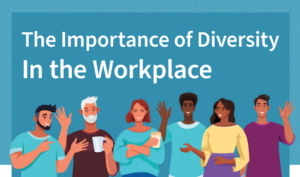
Employee Experience: 5 Paths to a More Human Work Culture
Anyone who says being a leader is easy is simply not being honest. Leadership is hard. Yes, I said it. And that shouldn’t shock anyone.

Anyone who says being a leader is easy is simply not being honest. Leadership is hard. Yes, I said it. And that shouldn’t shock anyone.

Are you disturbed by news about organizations backtracking on workplace diversity and inclusion commitments? I certainly am. For example, a recent Wall Street Journal article

No question about it. Strong internal communication is critical to a strong business. But it’s not easy — especially when workplace dynamics are constantly fluctuating.

Is your organization striving to create a more inclusive work culture? If so, you’re not alone. Many HR and business leaders are committed to improving

We all share a deep desire for belonging. From Abraham Maslow to Brené Brown, experts agree that this “indescribable feeling of being welcomed” is a

In recent years, diversity, equity, and inclusion (DEI) has become a red-hot topic among employers and human resources professionals who plan and manage these initiatives.

Diversity, Equity, and Inclusion (DEI) is by definition a people-centered business endeavor. So at first glance, the phrase “people-first DEI” may seem redundant. But that’s

In recent years, I’ve been encouraged by a groundswell of employers that are choosing to embrace “culture-add” people practices. In fact, several months ago, I

Podcast Sponsored by: QuantumWork Advisory According to McKinsey, the pandemic has accelerated existing trends in remote work, e-commerce, and automation. As a result, up to

Millions of Americans have left the workforce due to the ongoing public health crisis of the COVID-19 pandemic. This situation has particularly impacted female employees

A couple of months ago, we hit the one-year mark since George Floyd’s death. The response and social unrest conversations reached a fever pitch last

As we all know, the hiring process can be a stressful and uncertain time. From the candidates themselves to the HR professionals making the decisions,

Filling C-suite vacancies as soon as possible typically involves contacting executive search firms and posting to niche job sites. While standard recruitment tactics can certainly

One year after the onset of the global pandemic, there is light at the end of the tunnel. Economies are opening back up, the vaccine

COVID-19 inevitably uprooted the way our society works. Due to the pandemic, organizations have uncovered cracks in their foundations that shed light on long-standing social

A recent study revealed that roughly 40% of U.S. companies offer paid parental leave for both parents. Many publications, including the survey itself, highlighted this

Businesses don’t tend to thrive in an echo chamber. In fact, precedent shows you need the contribution of multiple perspectives to inform processes, build a

How do you defeat unconscious bias? First, you need to know what it is. Unconscious bias (also known as implicit bias) refers to unconscious forms

Throughout my conversations with people in the world of work, I hear these questions every March — about the time we start celebrating Women’s history

Workplace diversity is not a new topic. And yet, the world of work hasn’t made nearly enough progress in gender, cultural, and ethnic diversity. The

We’ve recently come to understand how diversity affects us all — in society and the workplace. But there are forms of diversity we don’t talk

How will the remote work era impact your 2021 DEI efforts? How will you keep the promises made around diversity, equity, and inclusion? Before remote

The success of any business is not just reliant upon the efforts of leadership. To truly thrive, companies need skilled and committed employees. This certainly

It’s an understatement to say the past several months have been a troubling time for those of us committed to racial equity and broader diversity,
The evidence overwhelmingly supports the business case for workforce diversity. So why are companies still failing to achieve their diversity goals? Diversity has become a